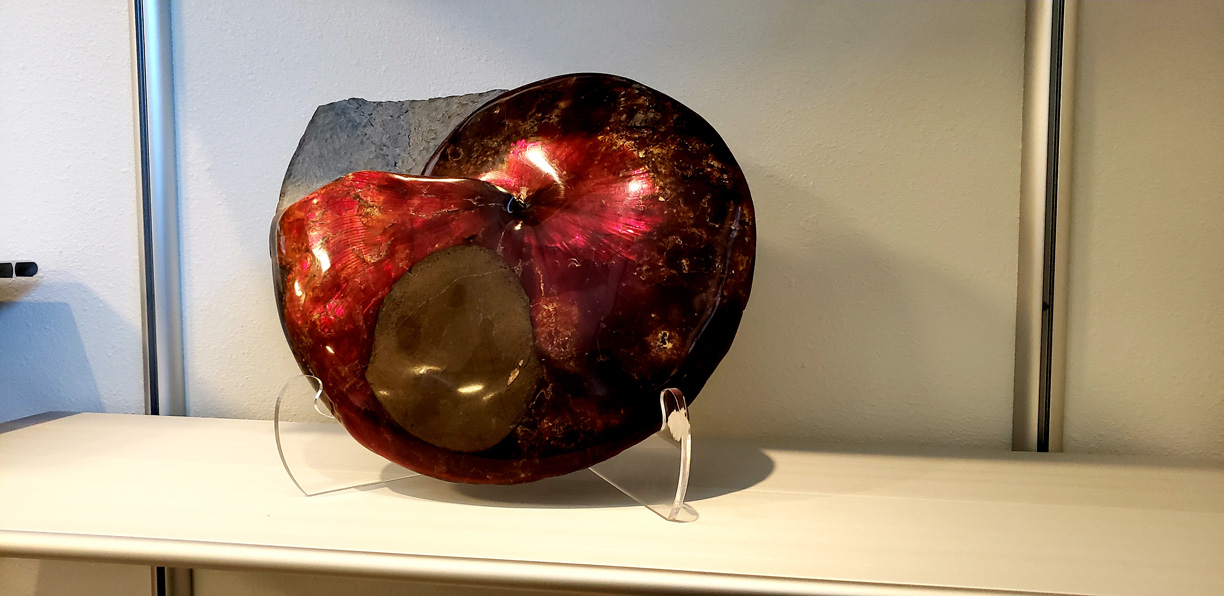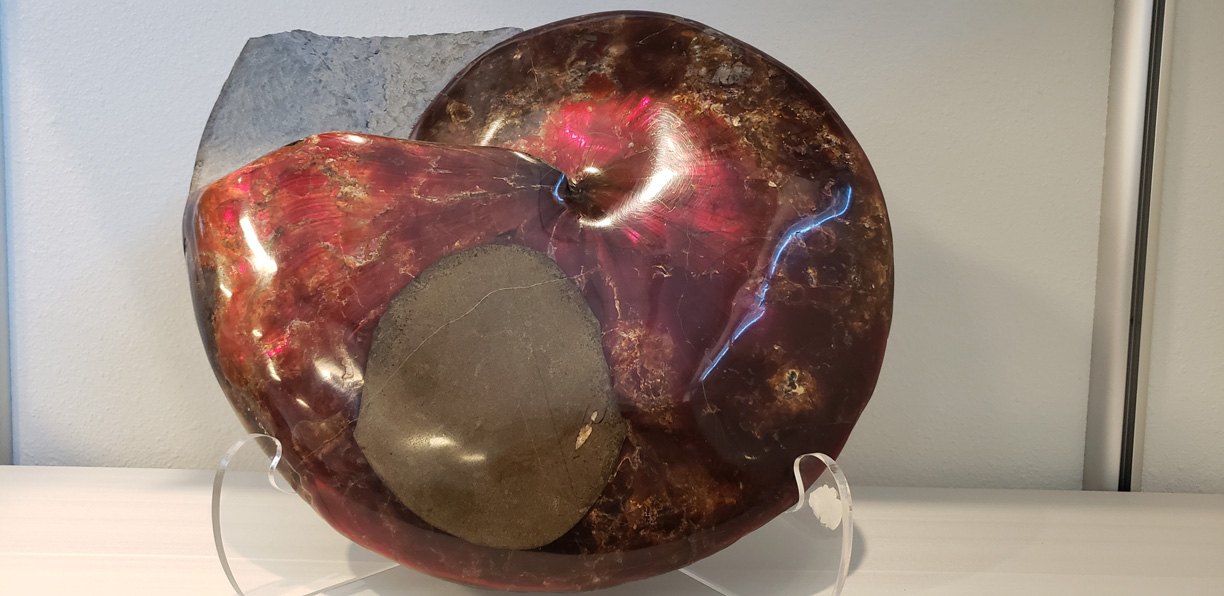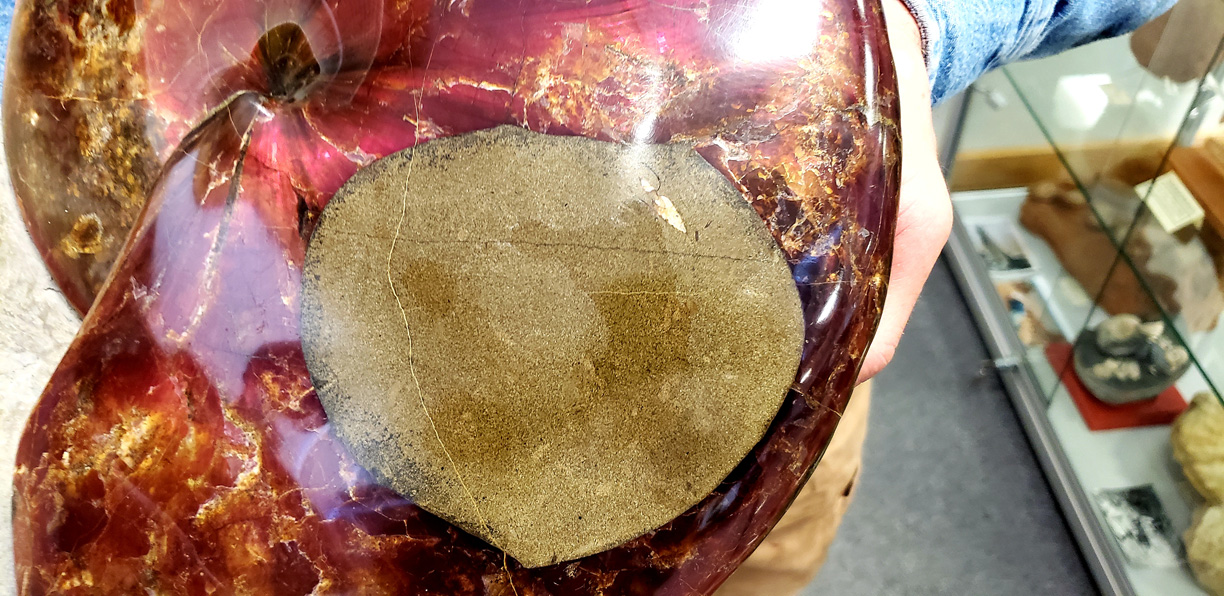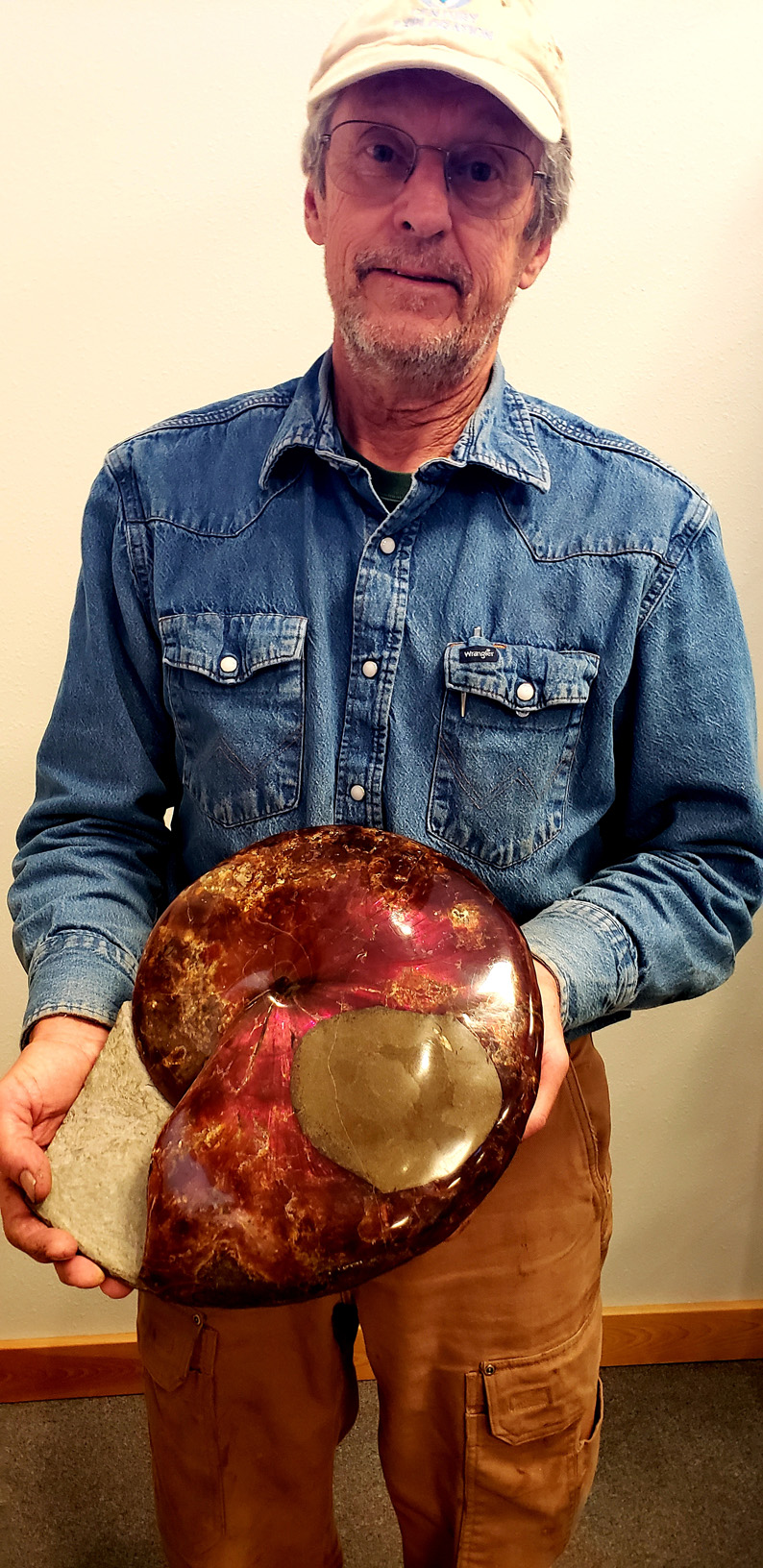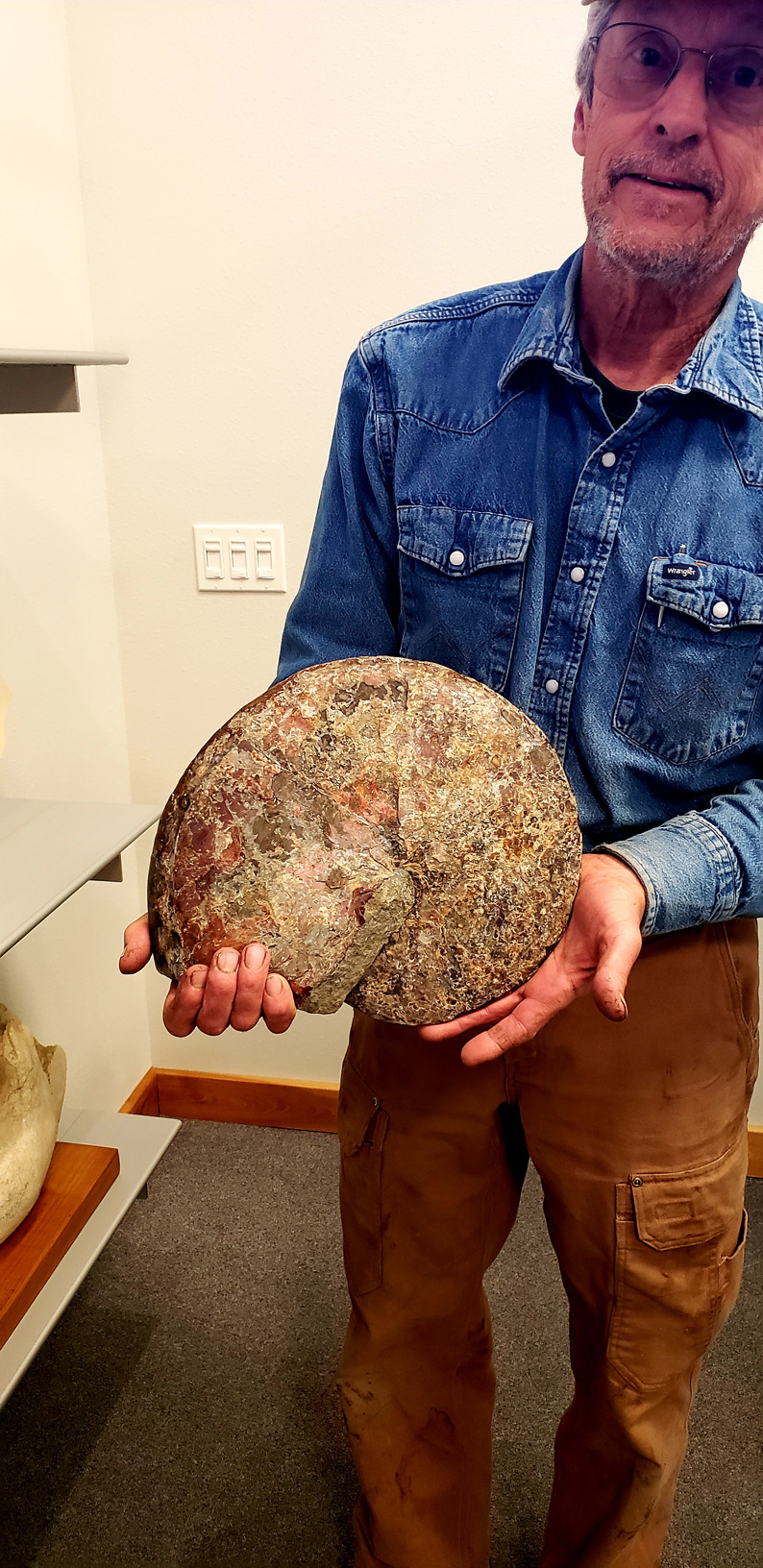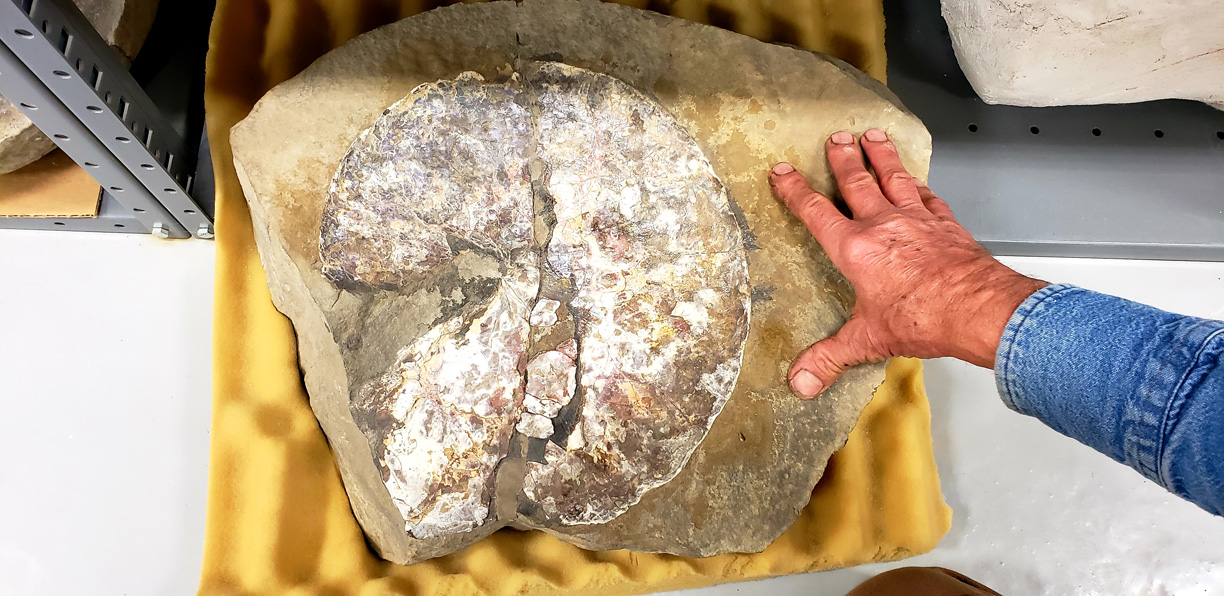

UK Ammonite Sphenodiscus
Sphenodiscus lenticularis
Fox Hills Formation (Timber Lake Mbr.)
Upper Cretaceous (Maastrichtian)
Dewey County, South Dakota
Fox Hills Formation (Timber Lake Mbr.)
Upper Cretaceous (Maastrichtian)
Dewey County, South Dakota
Seen here is a premier example of the spectacular ammonite Sphenodiscus. Found in limestone concretions, they often have perfectly preserved original aragonite shell that displays fabulous iridescence. This specimen is polished on one side to reveal this feature. The ammonite is 14 inches across its broadest point. Of particular interest is the very large predation/scavenger scar seen on the living chamber. It has a curious geometry suggestive of an attachment of some sort of uni-valve mollusc(?). This specimen includes the matrix from which the ammonite was extracted. It contains the original shell (from the unprepared side) that adhered to the matrix. It would be possible to polish this shell and it would display the same beautiful iridescence as seen on the prepared surface. The specimen is large and heavy and would require special shipping.
Sphenodiscus is involute, compressed, and generally with weak lateral and ventrolateral tubercles or a sharp venter. Sutures with narrow-necked entire or frilled saddles with many auxiliary elements.
The Fox Hills Formation is conformable and gradational with the underlying Pierre formation and can be either conformable or unconformable with the overlying Hell Creek Formation. The Fox Hills Formation is younger, thicker, and stratigraphically more complex to the east and is comprised of marginal marine sediments deposited during the final Cretaceous regression. To the west, the Fox Hills Formation is an upward-coarsening unit generally 30 to 45 m thick and usually contains three members: from the base, Trail City, Timber Lake, and Colgate. The lower Fox Hills (Trail City, Timber Lake) is generally dominated by hummocky bedding and contains a variety of trace fossils, most notably Ophiomorpha. The upper Fox Hills (Colgate), where present, is characterized by cross-bedding. To the east, including the type area, the section is generally 80 to 100 m thick and contains four members: from the base, Trail City, Timber Lake, Iron Lightning (Colgate and Bullhead lithofacies), and Linton.
Sphenodiscus is involute, compressed, and generally with weak lateral and ventrolateral tubercles or a sharp venter. Sutures with narrow-necked entire or frilled saddles with many auxiliary elements.
The Fox Hills Formation is conformable and gradational with the underlying Pierre formation and can be either conformable or unconformable with the overlying Hell Creek Formation. The Fox Hills Formation is younger, thicker, and stratigraphically more complex to the east and is comprised of marginal marine sediments deposited during the final Cretaceous regression. To the west, the Fox Hills Formation is an upward-coarsening unit generally 30 to 45 m thick and usually contains three members: from the base, Trail City, Timber Lake, and Colgate. The lower Fox Hills (Trail City, Timber Lake) is generally dominated by hummocky bedding and contains a variety of trace fossils, most notably Ophiomorpha. The upper Fox Hills (Colgate), where present, is characterized by cross-bedding. To the east, including the type area, the section is generally 80 to 100 m thick and contains four members: from the base, Trail City, Timber Lake, Iron Lightning (Colgate and Bullhead lithofacies), and Linton.

